Description
In the high-stakes arena of industrial automation, serial communication bottlenecks can quietly sabotage entire workflows—imagine a PLC straining to poll remote sensors over noisy lines, or an HMI lagging on critical status updates, leading to delayed responses in safety interlocks or production sequencing. These aren’t isolated glitches; they’re routine headaches in process control setups like distributed data acquisition in refineries or multi-axis coordination in assembly lines, where fragmented serial links expose systems to data loss, latency spikes, or outright failures under electrical interference. Engineers deploying VME-based architectures often face the dilemma of scaling I/O without ballooning complexity: add more ports, and you risk overwhelming the bus; stick with legacy singles, and you’re capped on throughput for high-reliability demands.
This is precisely the challenge the GE PMC422-LAM D2 resolves as an eight-port serial controller module, crafted to deliver robust, multi-channel connectivity that keeps your automation fabric intact. It zeroes in on the need for seamless serial integration, buffering up to 64 bytes per channel to iron out transmission hiccups and ensure I/O signals flow with precision, even in EMI-heavy zones. Vital for scenarios like expanding test benches or linking disparate field devices in legacy migrations, the GE PMC422-LAM D2 steps up when channel density matters most, enabling parallel RS-232/422/485 sessions without taxing host processors. Its PCI compatibility slips it effortlessly into VME cages, turning potential single points of failure into a distributed nerve center.
The downstream effects of unreliable serial handling ripple far: skewed timestamps erode historian accuracy, while dropped packets cascade into false alarms or inefficient batch runs. By leveraging 16C550-compatible UARTs and on-board FIFO management, the GE PMC422-LAM D2 enforces data integrity at the edge, empowering tighter loop closures and reducing the engineering guesswork in protocol handshakes. In short, it’s the enabler for resilient process control, where eightfold serial access isn’t luxury—it’s the baseline for operational agility in demanding industrial automation landscapes.
Bringing the GE PMC422-LAM D2 online in your stack is like outfitting your VMEbus with a dedicated traffic cop for serial streams—it latches onto the PCI backplane as a mezzanine card, fanning out eight isolated channels to interface with everything from barcode readers to legacy modems, all while the host CPU offloads the grunt work of polling and error correction. Positioned in the I/O periphery of your architecture, it handles asynchronous data bursts via configurable baud rates up to 921.6 kbps, injecting buffered payloads into the system bus for handoff to central controllers like GE’s own PACSystems or third-party RTUs, complete with parity checks and flow control to nix corruption.
In a live deployment, you’d rack it into a standard VME crate, wiring field devices to its DB-9 or terminal blocks for RS-232 simplex or RS-485 half-duplex modes, then map interrupts through the PCI fabric to your application’s device driver—think seamless Modbus RTU tunneling without custom middleware. What elevates its fit is the built-in switch inputs for hardware-triggered resets or mode selects, plus diagnostic registers that expose link stats via memory-mapped I/O, letting you layer in redundancy by mirroring ports across dual modules for failover in safety-rated loops. It syncs effortlessly with protocols like Profibus or DNP3 subsets, bridging the gap to higher-layer SCADA without introducing jitter in fast-scan cycles. The GE PMC422-LAM D2 isn’t a standalone; it’s the connective tissue that unifies disparate endpoints, streamlining expansions in modular backplanes while keeping latency under 1 ms per frame.
| Specification | Details |
|---|---|
| Model Number | PMC422-LAM D2 |
| Brand | GE |
| Type | Eight-Port Serial Controller Module |
| Input Voltage | 5 V DC (PCI bus) |
| Operating Temp Range | -20°C to +70°C |
| Mounting Style | PCI Mezzanine on VMEbus |
| Dimensions | 74 x 149 mm (PMC form factor) |
| Weight | 0.2 kg |
| Interface/Bus | PCI 2.2 (32-bit/33 MHz) |
| Compliance | PCI SIG, CE, FCC Part 15 |
| Supported Protocols | RS-232/422/485, UART 16C550 |
| Typical Power Draw | 3 W |
- PMC422-LAM D2
- PMC422-LAM D2
Deploying the GE PMC422-LAM D2 arms your setup with a level of serial resilience that’s engineered for the grind, where its per-channel isolation quells ground loops that plague shared buses, delivering consistent throughput that stabilizes PID loops in volatile processes without the drift seen in overloaded single-port alternatives. This isn’t about raw speed alone; it’s the assurance that buffered exchanges keep commands crisp during surge loads, averting the misfires that rack up scrap rates in precision manufacturing, all while its low-jitter clocks maintain sync across distributed nodes for holistic system health.
On the maintenance front, the module’s exposed status LEDs and register-accessible error counters cut diagnostic cycles short—spot a FIFO overflow via software poll, and you’ve got the vector to reroute traffic before it bottlenecks, trimming mean-time-to-repair by half in sprawling I/O networks. Integration flows naturally too, with driver libraries that plug into VxWorks or Linux kernels, easing the overhead of qualifying new hardware and letting your team pivot resources to algorithm tuning rather than link babysitting. Over extended runs, this fosters long-term performance through thermal throttling safeguards that prevent lockups in hot enclosures, ensuring your serial backbone endures years of 24/7 duty without baseline shifts.
For those eyeing scalability, the GE PMC422-LAM D2 shines in hybrid migrations, where its drop-in form factor supports hot-swap upgrades to Ethernet overlays without rewiring the cage—positioning your automation for IIoT without the full-stack rewrite. It’s a pragmatic pick that balances fortitude with finesse, turning serial vulnerabilities into strengths that amplify overall efficiency.
In petrochemical refineries, the GE PMC422-LAM D2 orchestrates serial daisy-chains for tank gauging and valve actuators, where process control environments demand high reliability amid corrosive fumes—its eight channels consolidate Modbus queries from level transmitters, ensuring real-time inventory sync without dropped packets that could trigger unsafe overfills. Deployed in VME racks near distillation columns, it handles fast data cycles from vibration-prone mounts, bolstering critical system uptime for continuous fractionation runs.
Data centers leverage it for rack-level sensor hubs, channeling RS-485 streams from environmental monitors and UPS telemetry to central BMS platforms—ideal for harsh conditions with cooling failures, where buffered ports maintain alert fidelity during power glitches, supporting the continuous uptime essential for server farms. In automotive testing bays, the module drives multi-device scripting over RS-232 for dynamometer controls and emissions analyzers, delivering high reliability in high-vibration setups to capture transient data without loss, streamlining validation in process control loops tied to quality gates.
Across these, the GE PMC422-LAM D2 proves indispensable for serial-intensive nodes, where port multiplicity meets the rigors of industrial automation head-on.
PMC422-LAM D1 – Quad-port variant for compact setups with moderate channel needs
PMC422-HS – High-speed asynchronous sibling for baud rates exceeding 1 Mbps
VMIVME-7800 – VME host carrier board to pair for expanded mezzanine slots
PMC424 – Parallel port counterpart for legacy printer or tape drive interfaces
GE IS215UCVEH2A – Mark VIe I/O module for hybrid serial-to-Ethernet bridging
PMC310 – Entry-level serial adapter for basic RS-232 consolidation
VMIPCI-7805 – PCI-to-VME bridge for integrating into non-native backplanes
When prepping the GE PMC422-LAM D2 for insertion, start by auditing your VME slot’s PCI lane alignment—mismatched bridges can throttle bandwidth, so verify with a bus analyzer if your crate’s firmware supports 33 MHz clocks. Probe the +5V rail for clean ripple under 50 mV, as serial transceivers draw peaks during FIFO flushes, and allocate at least 5mm stack height above the host card to avoid airflow choke in dense assemblies. If crossing RS-485 multidrops, tally node addresses pre-wire to sidestep ID clashes, and bench-flash the onboard EEPROM with your custom baud map using GE’s config utility to lock in defaults.
Post-install, vigilance is key but light-touch: every shift, ping a test channel for round-trip latency via a loopback plug, logging variances to flag cable wear early, and inspect DB-9 shields biannually for pin corrosion, especially in dusty fabs— a multimeter continuity check takes minutes but averts intermittent ghosts. GE advises semi-annual FIFO stress tests, flooding ports with burst traffic to confirm buffer overruns don’t cascade, and monitor interrupt counts through the host OS for equitable load sharing. For offsite crates, tether it to a remote console via one channel for over-the-air register dumps, catching drift before it demands a trek. This routine fortifies the module’s role without commandeering your calendar.

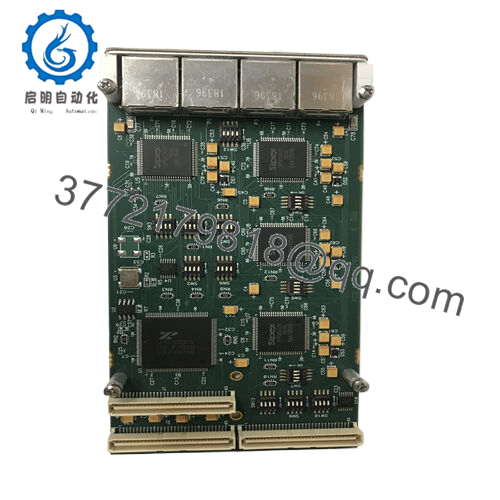
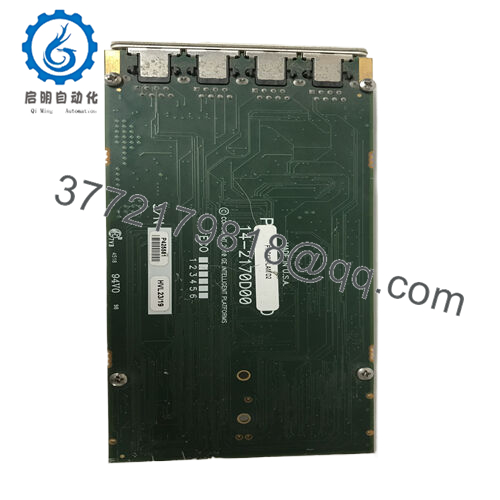
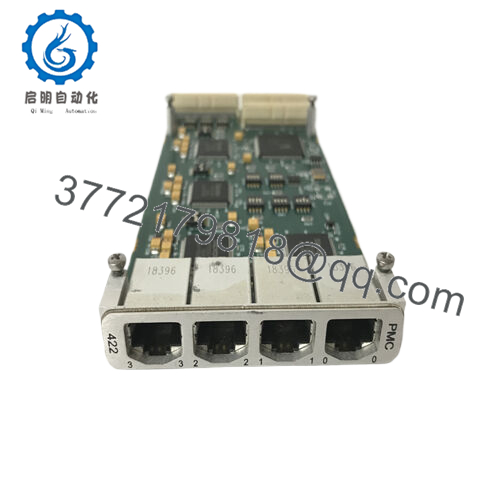
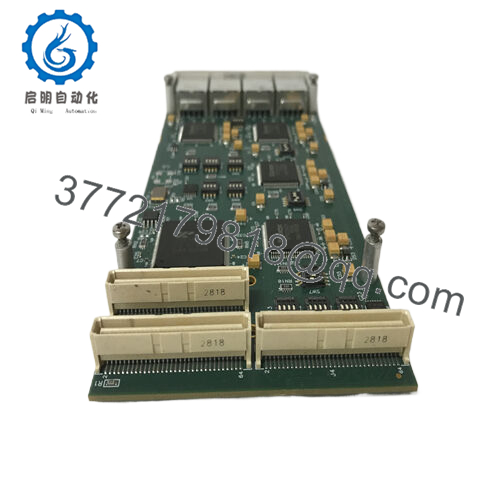
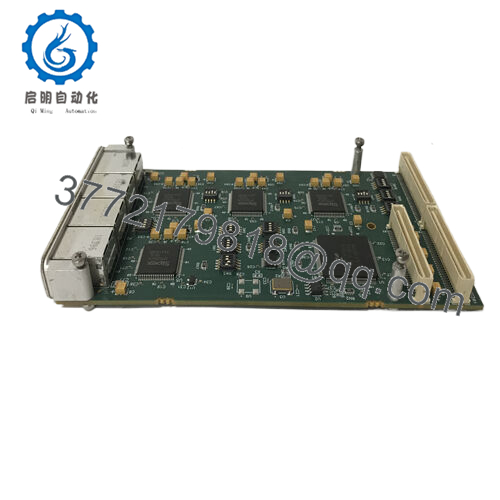
 WhatsApp: +86 16626708626
WhatsApp: +86 16626708626 Email:
Email:  Phone: +86 16626708626
Phone: +86 16626708626


